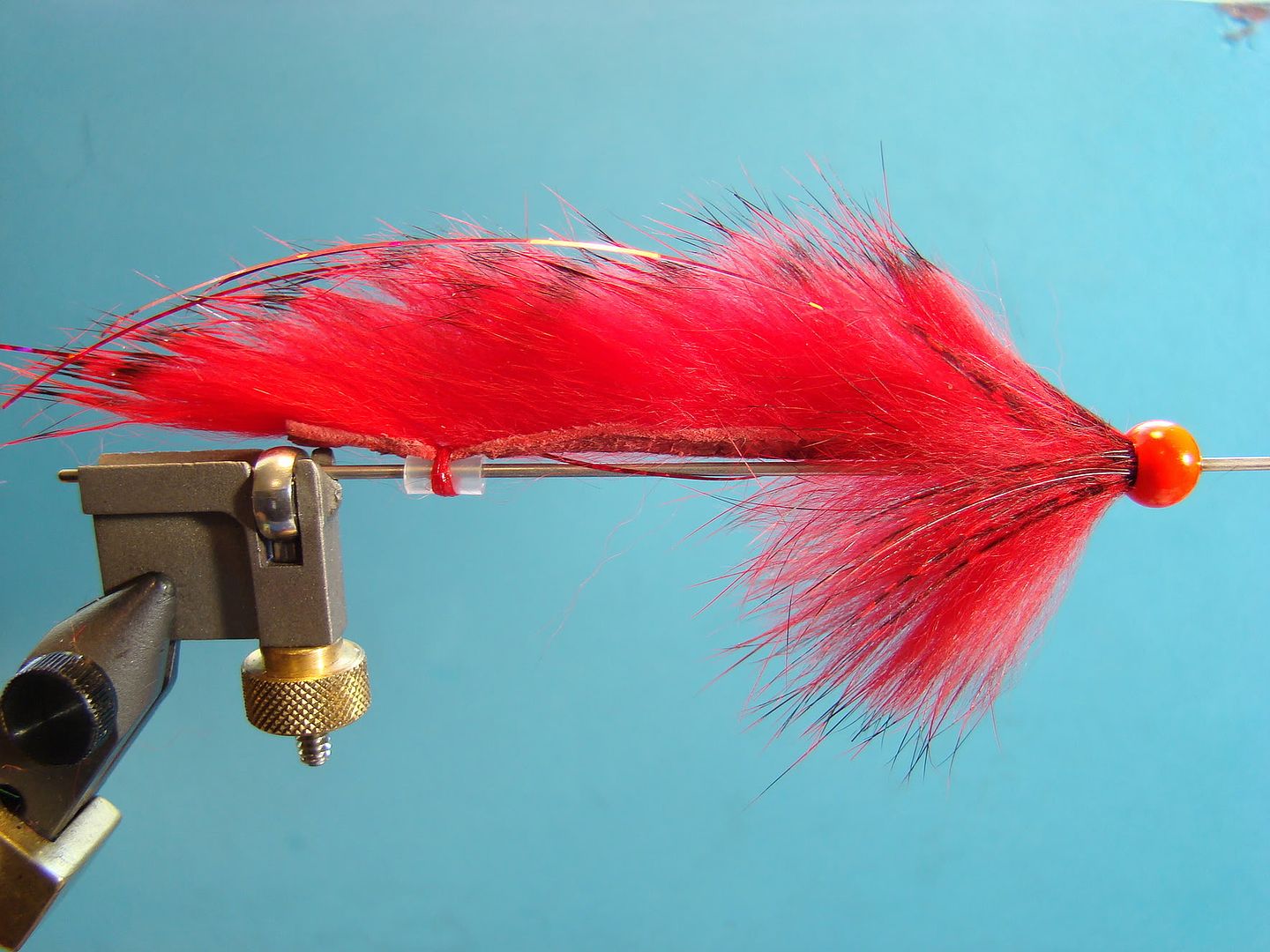
The original String Leech, sometimes referred to as the Strip Leech, is nothing more than a rabbit strip attached to extra stout cobbler's (showmaker's) thread. First, the hook is snelled followed by tying a loop to connect the leader at the other end. The length of the thread is dictated by how long of a strip was going to be tied. In order to tie the strip on the thread had to be brought under tension. Once tension was accomplished Flashabou was tied on first followed by the strip. That's it! A super simple, but highly effective fly. The fly proved to be a knockout, however, there were some issues. First, how to get the fly to sink. This was an easy fix. An angler simply attached a split shot or two to the thread behind the head. The main issue was lateral separation of the hook from the strip. Once the fly swung into softer water the hook dropped away from the strip resulting in a lot of missed strikes. Although tying the hook to the strip proved helpful, many times the hook would foul during the cast. If you ever get a chance to gaze into an old timer's fly box, you might just see a few to this day!
Credit for this awesome steelhead tube fly goes to noted Pacific Northwest guide and talented tier, Brian Silvey. Brian solved the long time dilemma of the hook dangling below the rabbit strip on the String Leech by attaching a small section of tubing towards the rear of the strip. I have embedded a video (the best I could find) explaining the reasoning of two different sized tubes as well as showing the rigging of this fly at the end of the tying instructions.
There are numerous positive attributes to this fly: endless color and material combinations, various sizes it can be tied, very easy to cast, superlative action in the water, and effective hook sets.
The majority of tandem tubes are tied with schlappen as a collar however, keep in mind you have several options available. Although I occasionally tie these flies with schlappen, I prefer to use rabbit. When I want a longer fly I will tie the collar with marabou for a even more robust silhouette. If you add grizzly saddle to these longer flies tied with marabou they are called Tube Snakes.
Material
Thread: 6/0 color of choice
Tubing: HMH 1/8" O.D. and 1/16" O.D.
Body: Rabbit strip color of choice
Collar: Schlappen, rabbit, or marabou color of choice
Head: Cone or bead
Step 1:
Cut a 3/16" piece of 1/8" O.D. tubing and insert on mandrel. Start thread.
Step 2:
Add a small drop of Super Glue to the top of the tube. Separate hairs at the tie in position of a precut rabbit strip (I am utilizing a 2 1/4-inch strip for this demonstration.) Moistening the hair will help tremendously. Secure strip to tube. Ensure you haven't trapped any hairs.
Step 3:
Hand whip finish and apply head cement. Remove tube from mandrel.
Step 4:
Cut a 1-inch section of 1/16" O.D. tubing and place on mandrel. Start thread at the read of the tube as pictured.
Step 5:
Slide the rear tube back on the rear of the mandrel. This will keep the rear materials from dropping and/or getting in the way. Additionally, this helps with keeping the strip centered on the mandrel. Next, tie in the forward portion of the strip with very tight wraps. Apply head cement. Add 3 strands of Flashabou or similar flash material to each side.
Step 6:
Prepare the forward portion of the rabbit strip by cutting in at an angle. This will ensure a small tie in area and smooth underbody.
Step 7:
Tie in strip by tip and wrap forward. Each wrap should be directly in front the the previous wraps. Overlapping will suppress the hairs. The amount of wraps is a personal choice, but 3 to 5 is more than sufficient. Too many wraps will deaden the fly's actions in the water. (Pictured is 5 wraps.) Note: I have moistened the hair to keep it manageable. Secure strip and trim away excess.
I have elected to add an additional collar of red guinea.
Step 8:
The final step is removing the fly from the mandrel and adding a bead. Push the bead firmly on to the fly. Cut away excess tubing leave approximately 1/16". Place the head back on the mandrel from the rear. The tip of the mandrel should be sticking out just past the end of the tube. Apply heat from a lighter. Utilize the coolest part of the flame (blue in color.) The edge of the tube will roll back locking the bead in place.
Ready to tie and fish one of the deadliest steelhead flies?
I tie and fish various sizes from 2 1/2" to 5" accordingly - smaller sizes in summer and fall, larger sizes in winter and spring or when water conditions dictate.
A small collection of various styles and sizes.

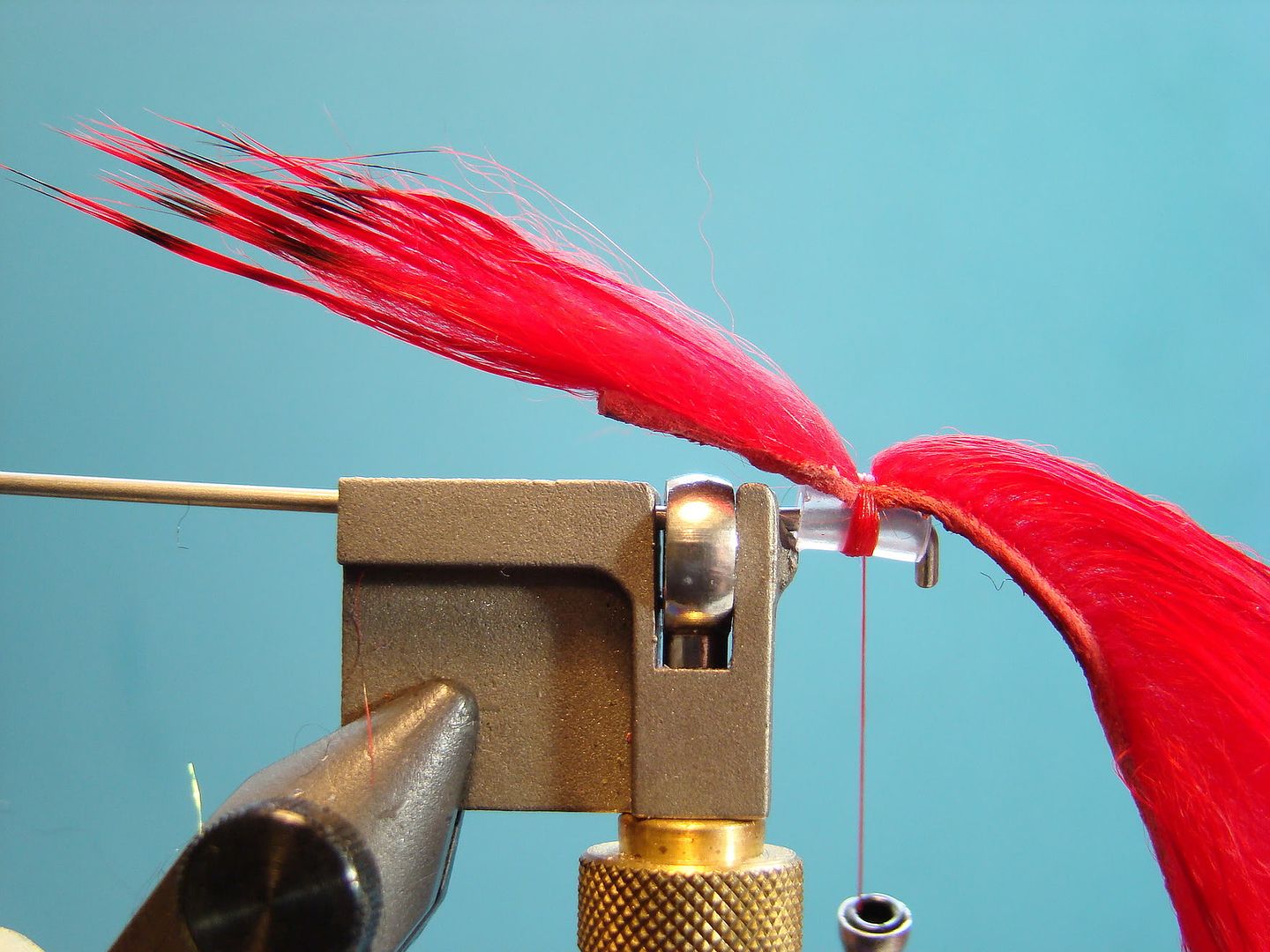
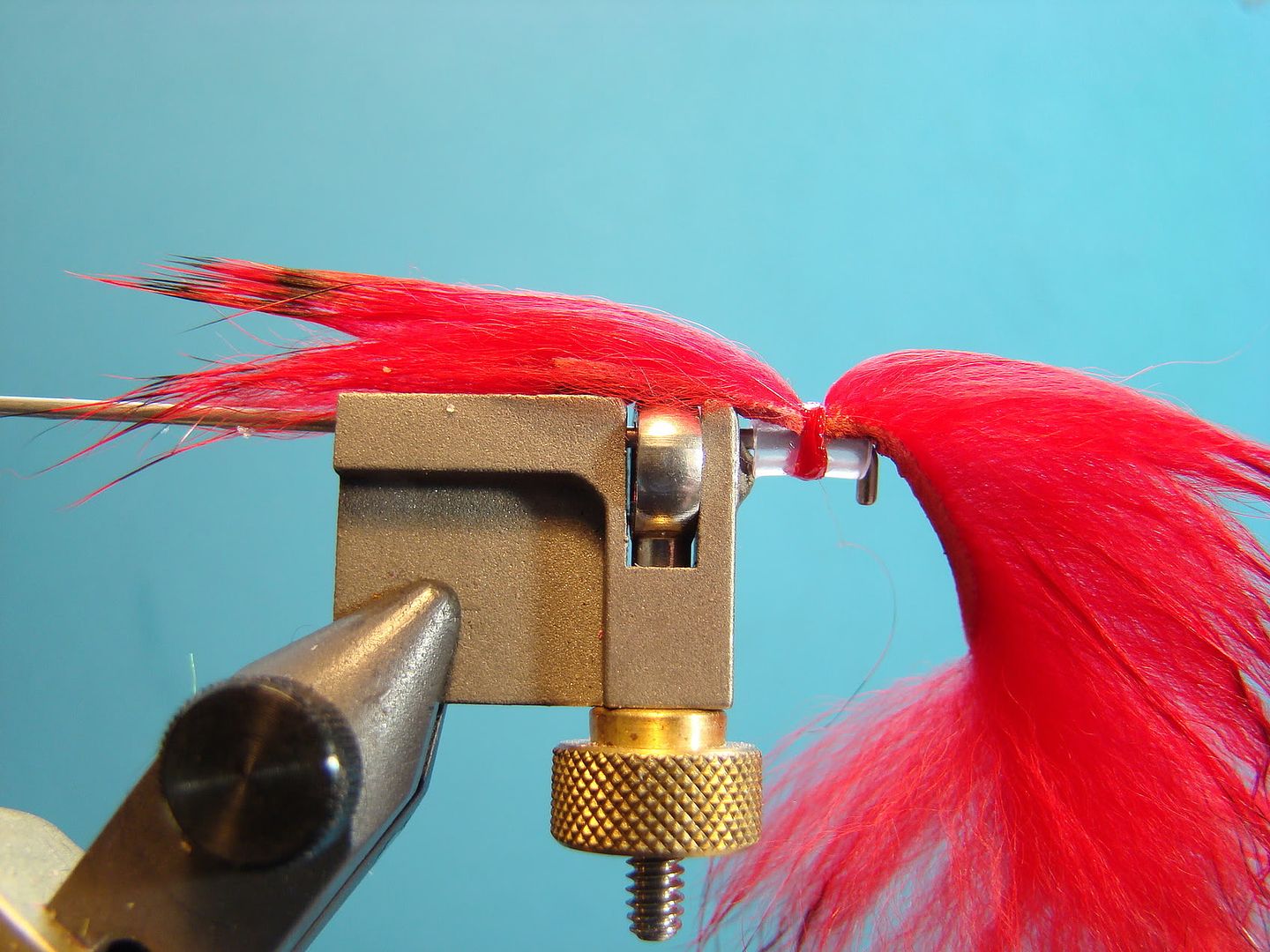
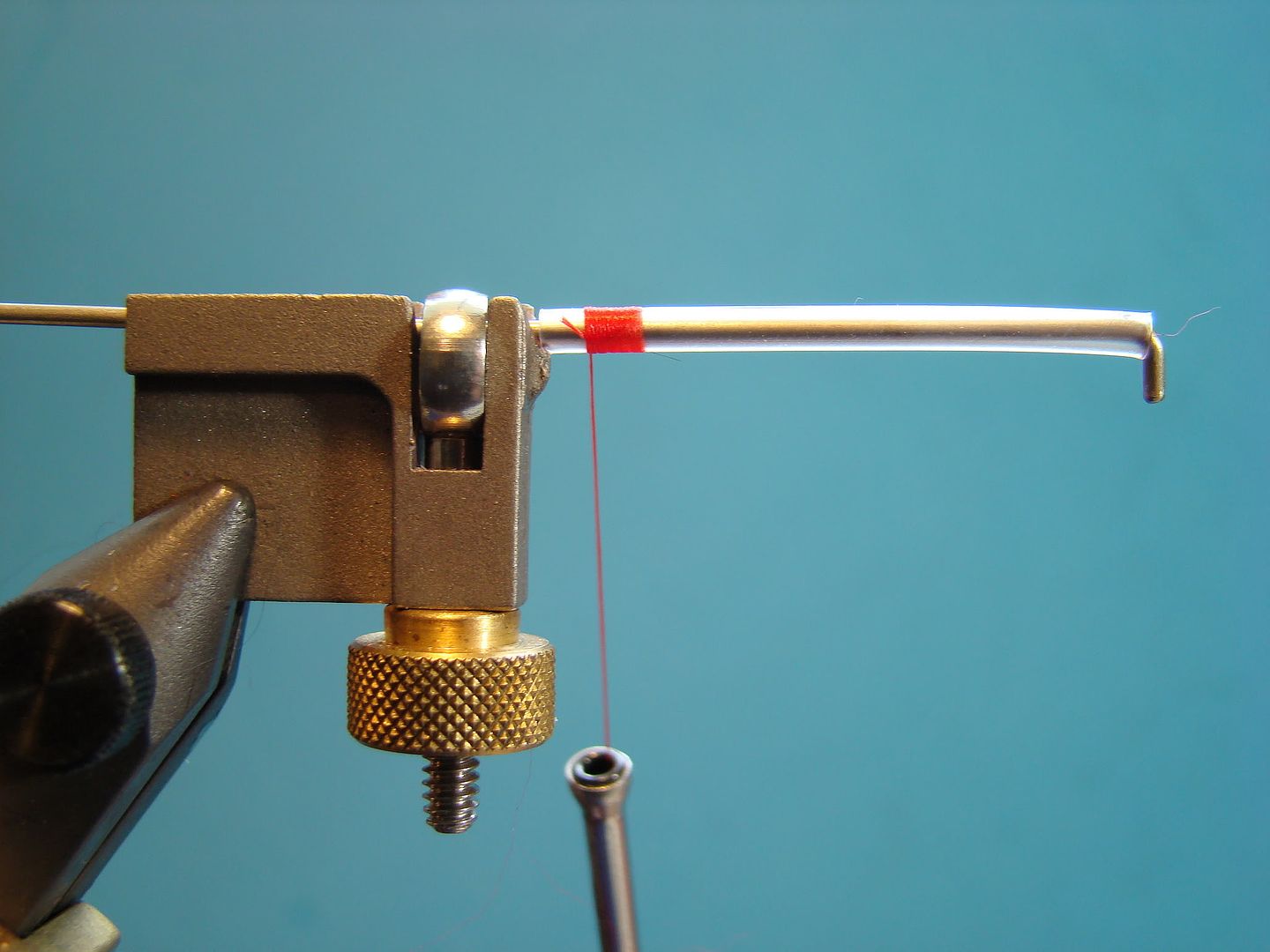
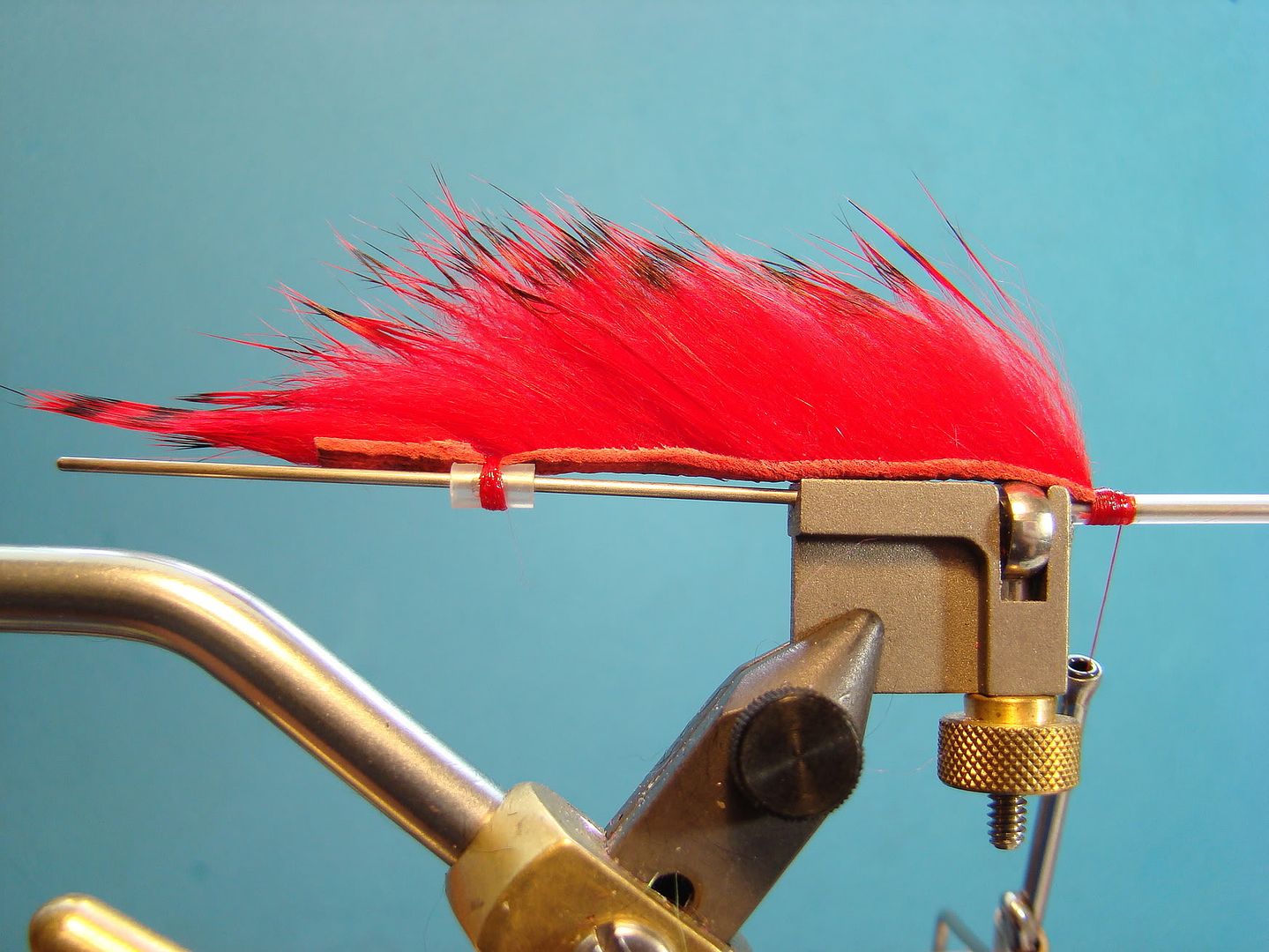
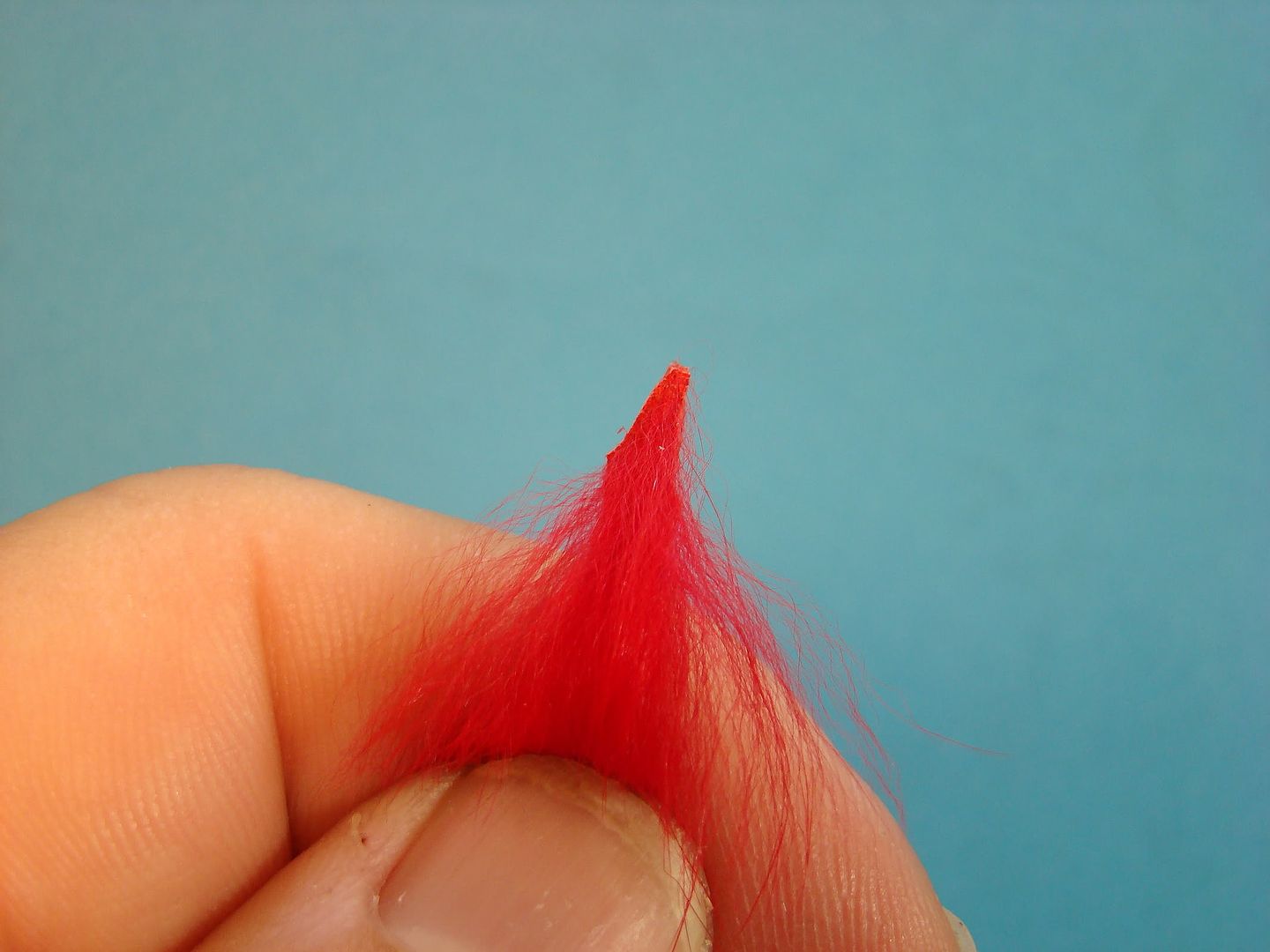
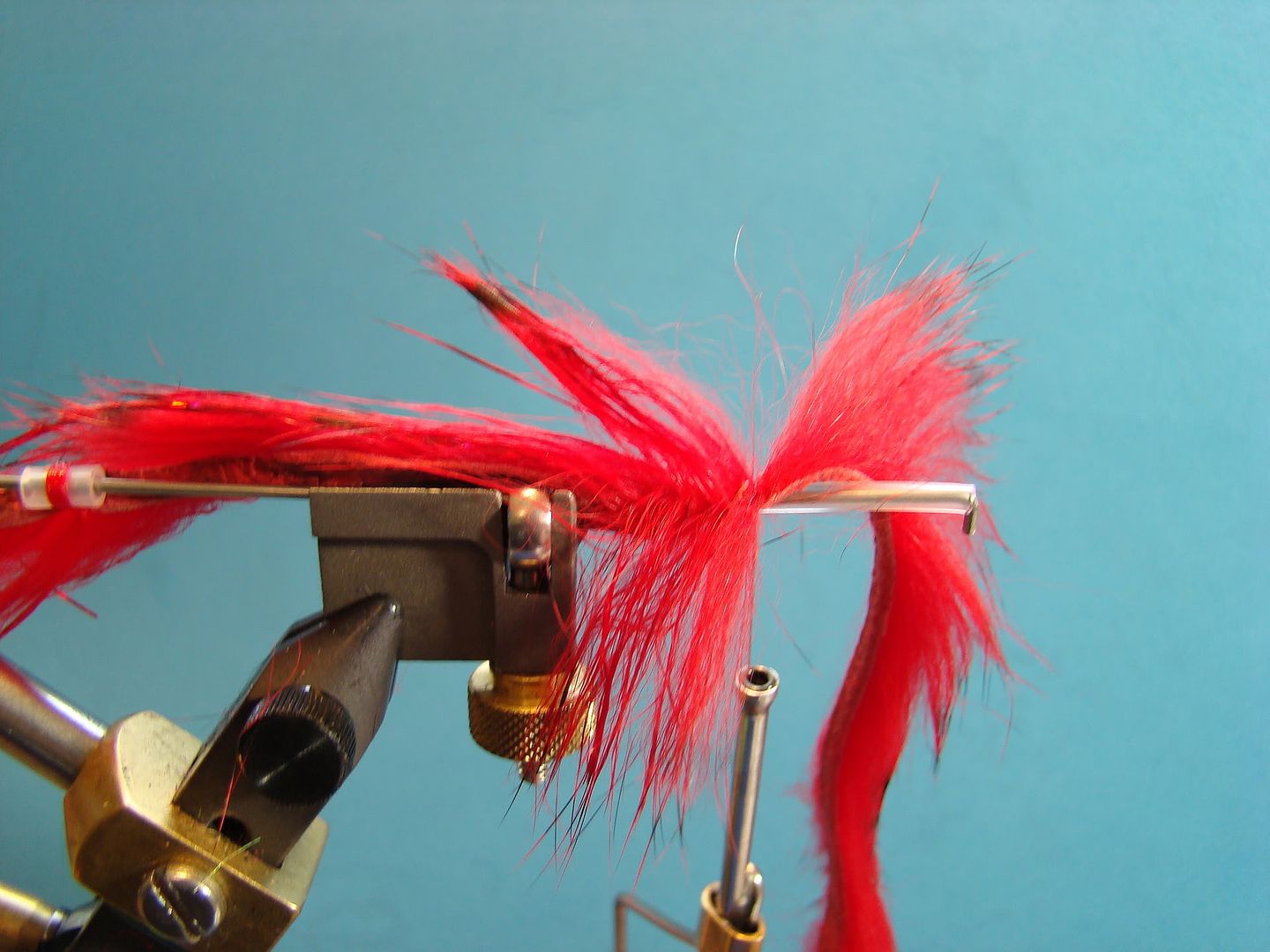
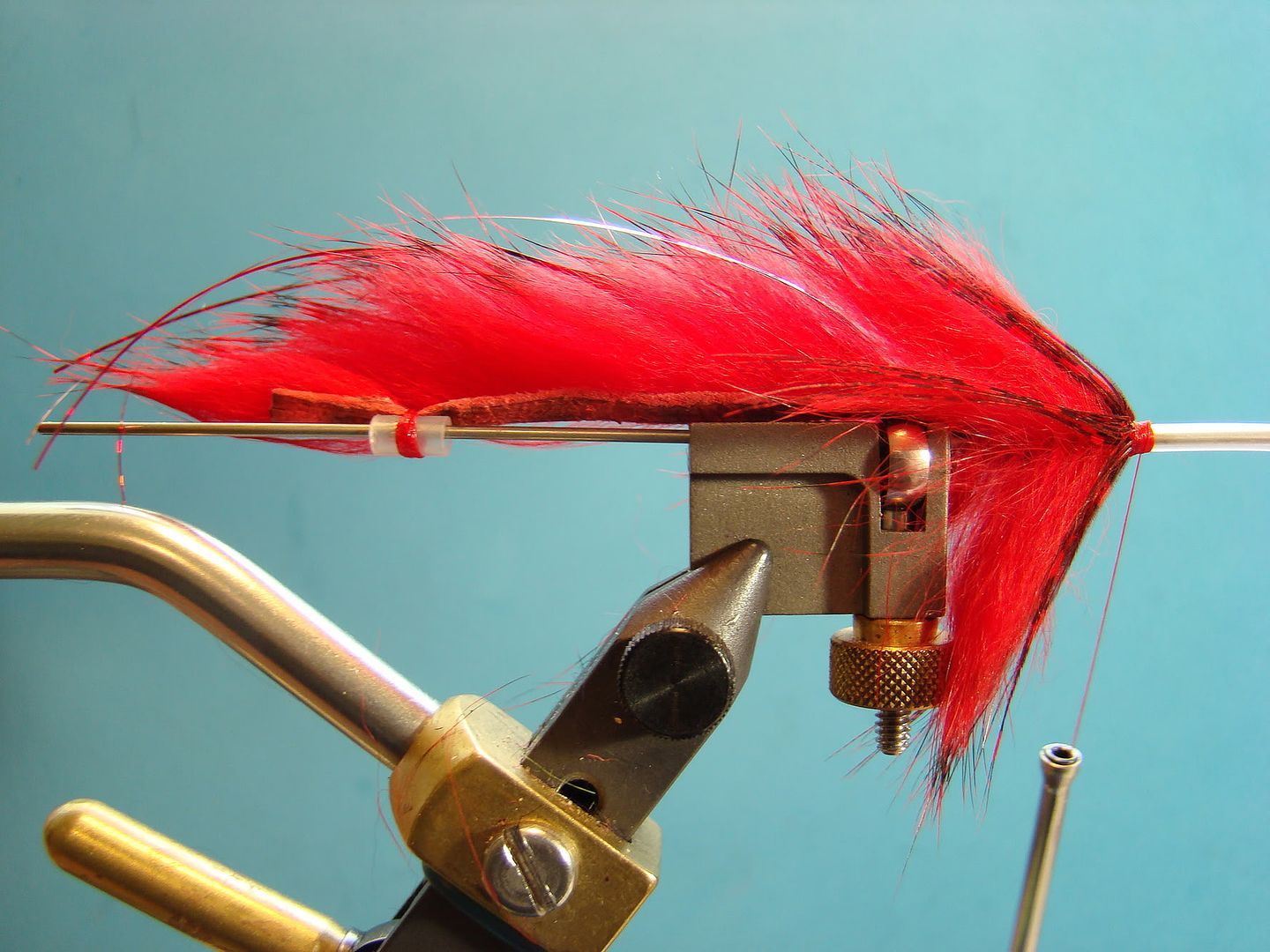
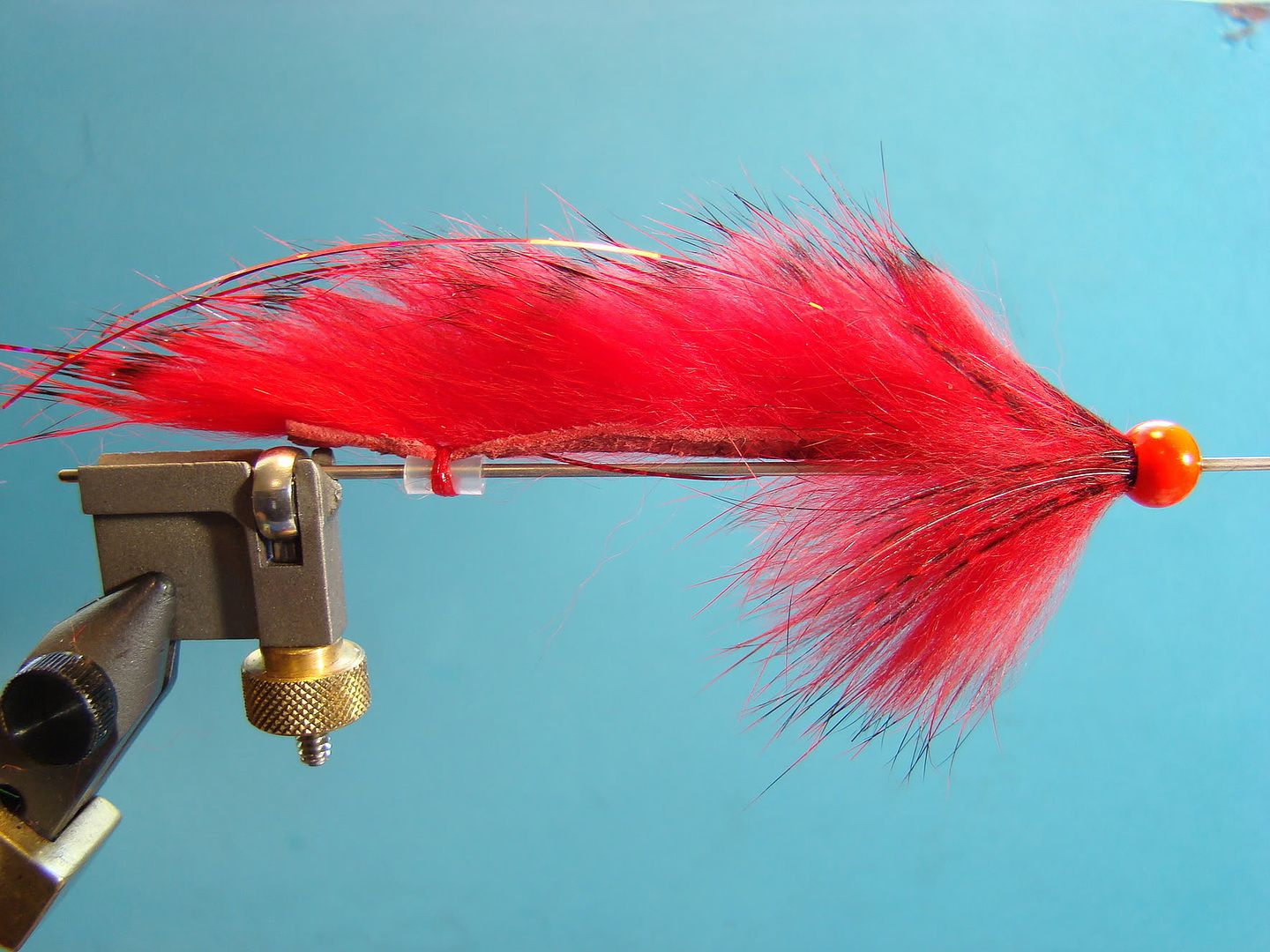
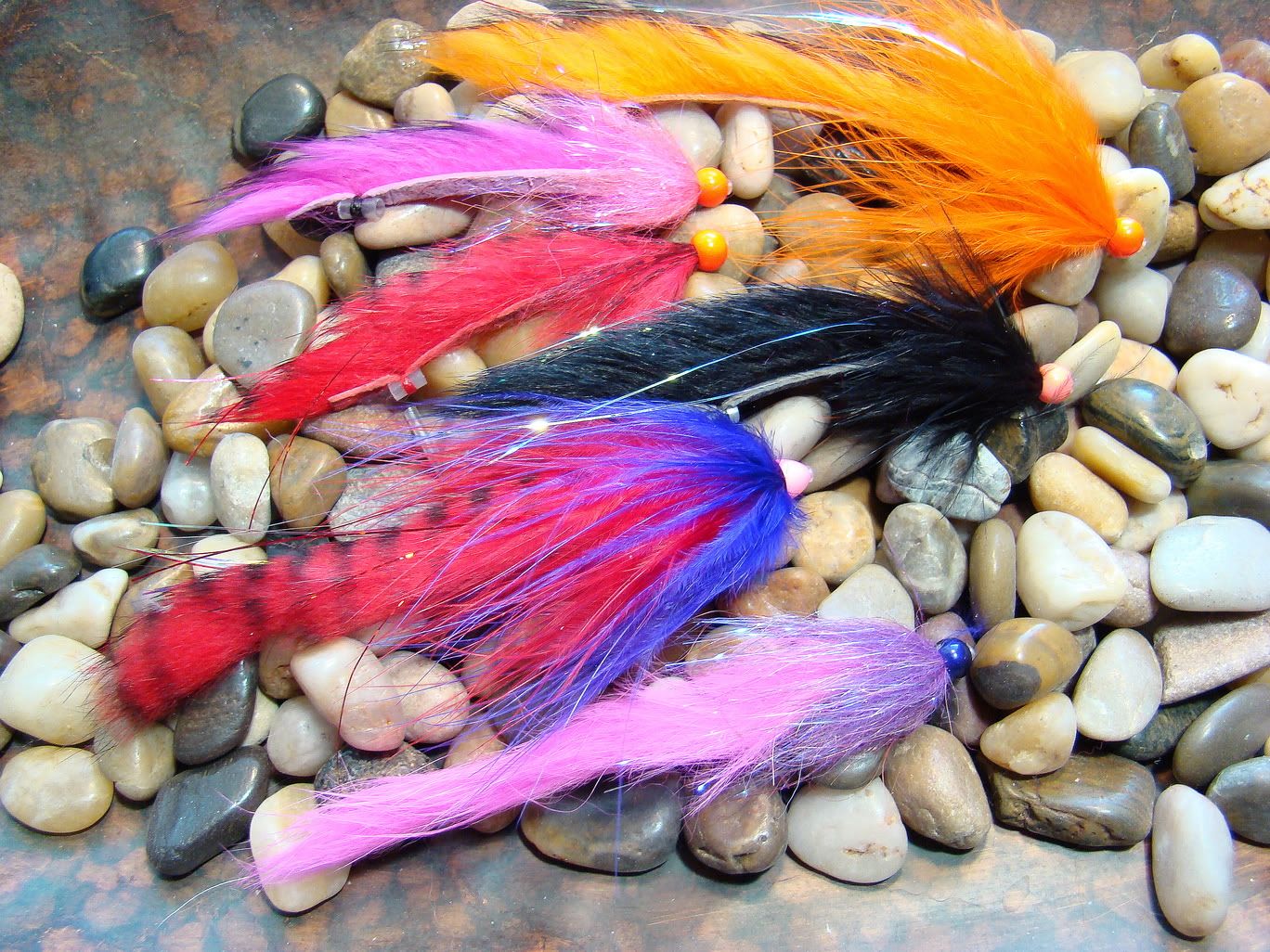
No comments:
Post a Comment